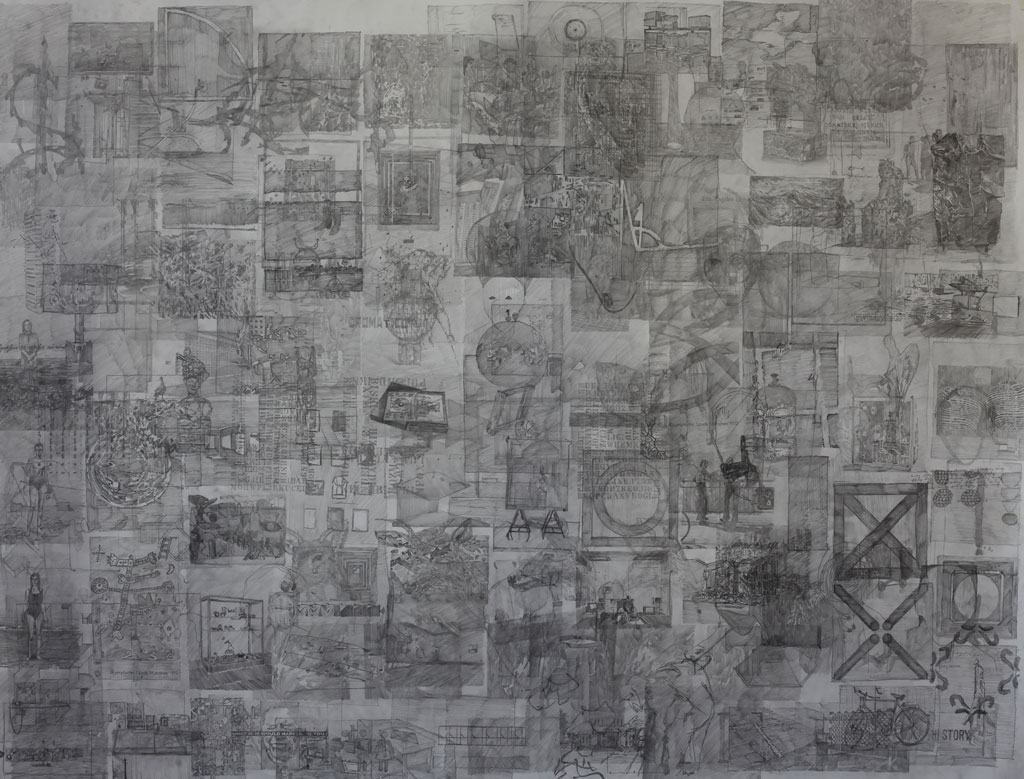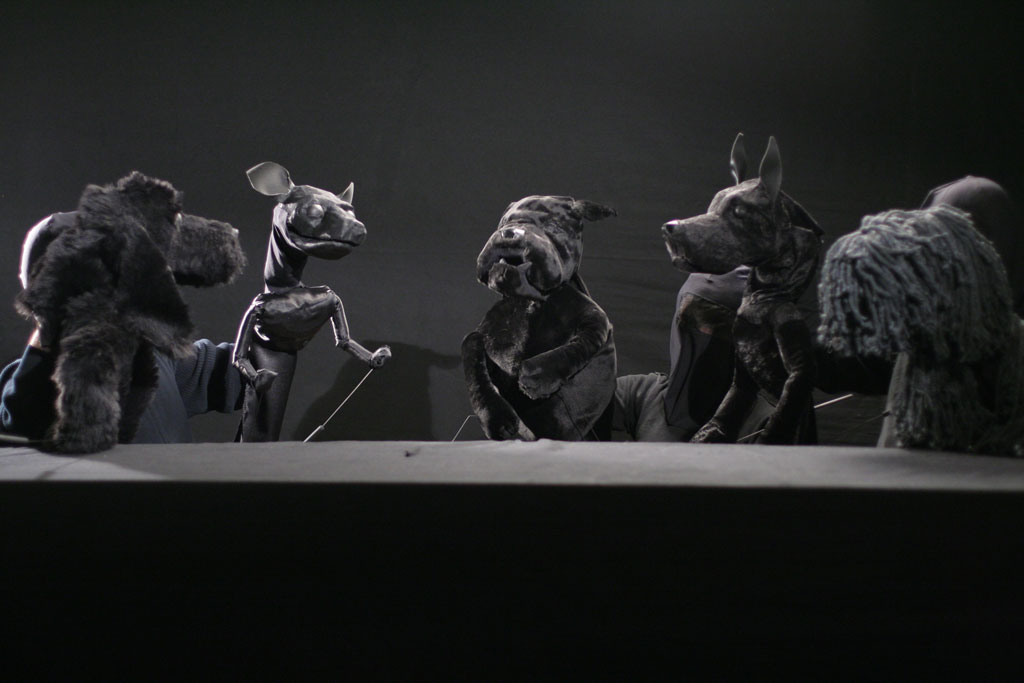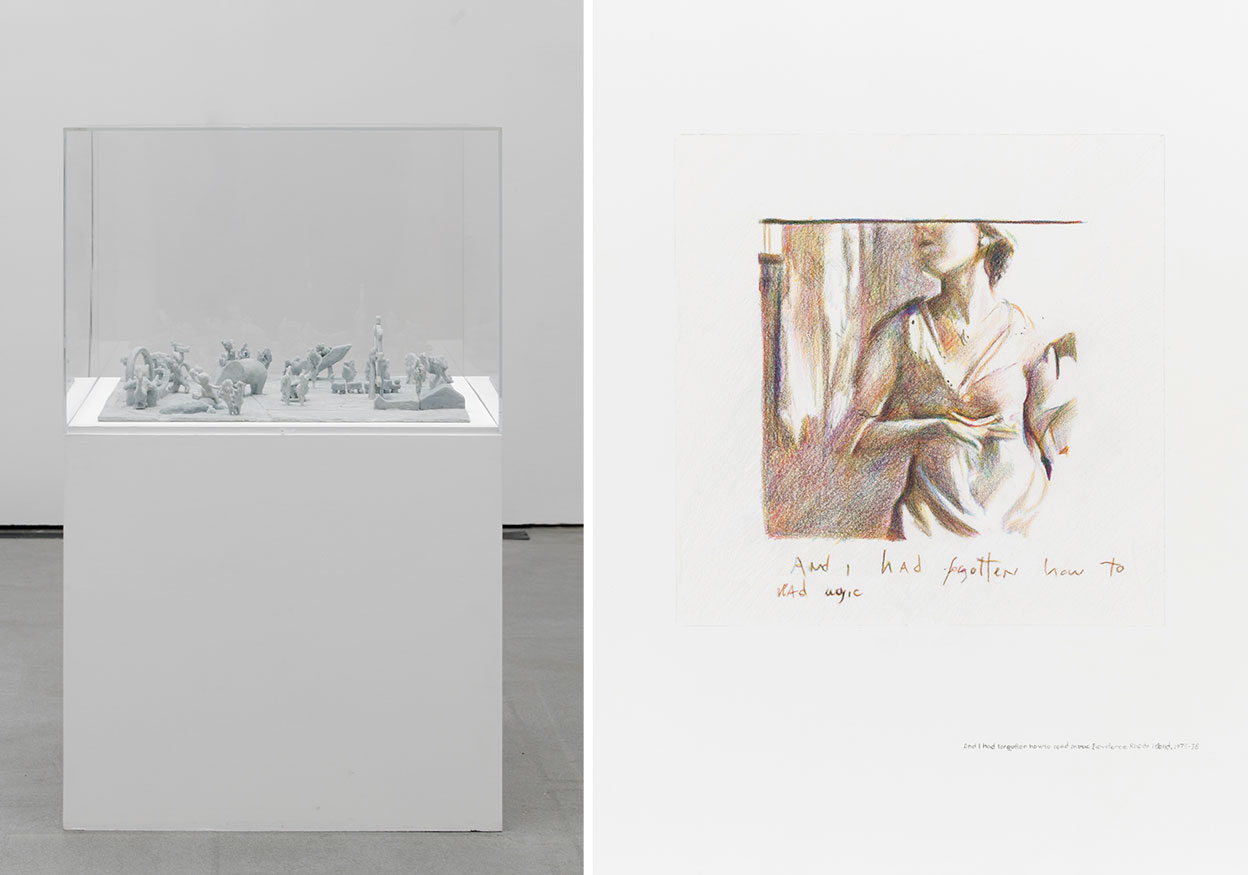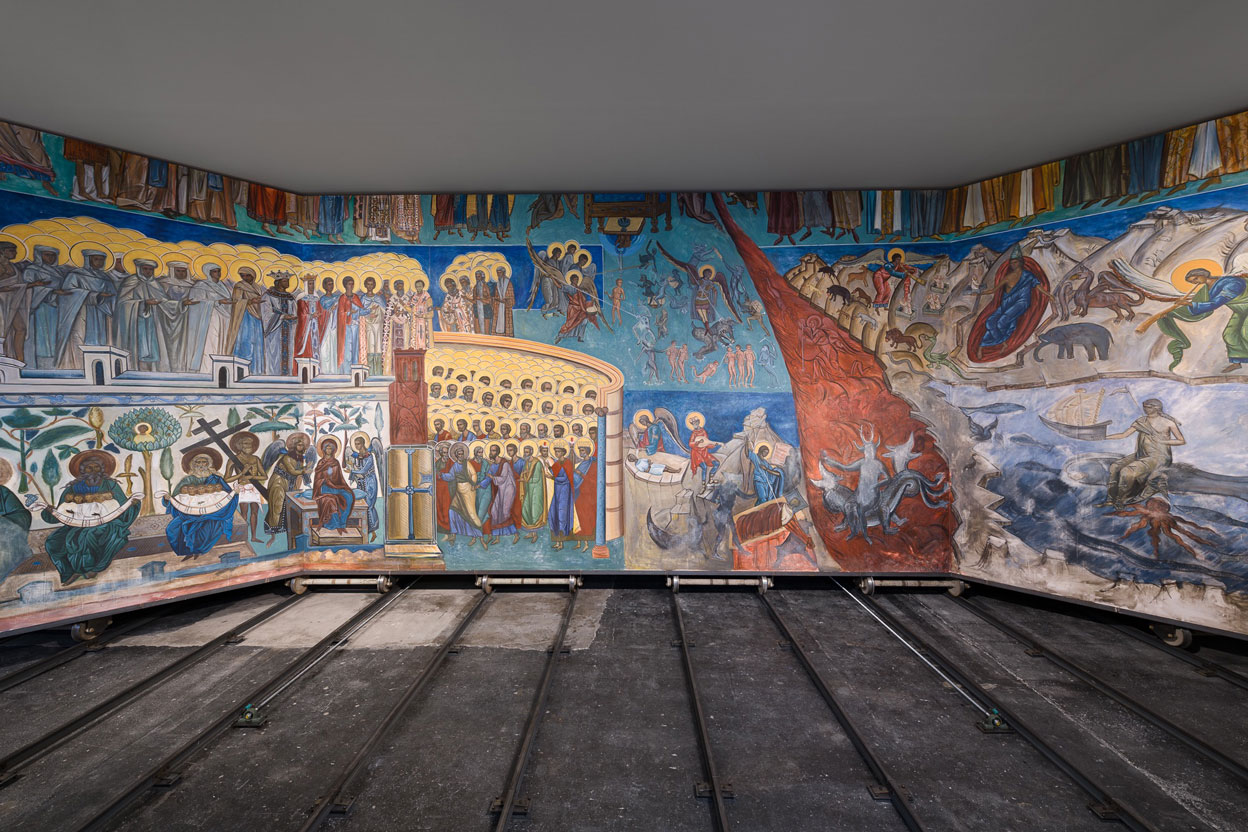ART-PRESENTATION: Ciprian Mureşan
![]() Working with a variety of media, (drawing, video, objects, photography, and books), Ciprian Mureşan recontextualizes and deconstructs the works of well known literary and art historical figures. His practice displays a voracious appetite for metabolizing history, using the platform of art as a mode of critique and intervention. Mureşan’s approach to ideas is realized in a diverse spectrum of media that coalesce to form a cohesive view of the world that is sardonic, sometimes playful, and often darkly humorous.
Working with a variety of media, (drawing, video, objects, photography, and books), Ciprian Mureşan recontextualizes and deconstructs the works of well known literary and art historical figures. His practice displays a voracious appetite for metabolizing history, using the platform of art as a mode of critique and intervention. Mureşan’s approach to ideas is realized in a diverse spectrum of media that coalesce to form a cohesive view of the world that is sardonic, sometimes playful, and often darkly humorous.
By Dimitris Lempesis
Photo: S.M.A.K. Archive
Ciprian Mureşan’s versatile visual language is embodied in a method of reproduction and reference. For his solo exhibition at S.M.A.K. during EUROPALIA ROMANIA, the artist has made a scale model of the Museum for the presentation of a series of so-called “palimpsest drawings”, which he has based on images from the museum’s new collection catalogue. In a layered way, he reduces all the artworks in the collection to a post-figurative state: a destructive and at the same time creative act that underscores the absurdity of also depicting this history as a linear story. The exhibition takes this new installation as a starting point for further exploration of Mureşan’s subjective approach to time, memory and the processes of historicization. Ciprian Mureşan is part of a generation of artists who were adolescents at the time of the fall of Communism in Eastern Europe, and the ensuing political and social restructuring of Romania has profoundly impacted the way in which its artists question artistic production in a post-utopian era. Born in communist Romania in 1977, Mureşan was 12 during the Revolution of 1989, when the Eastern Bloc collapsed; he came of age in the ensuing period of “catch-up modernization” which heralded Romania’s shaky transition to capitalism. His last two decades in Cluj, where he now lives and works, have fostered in him both a sense of disillusionment with his country’s institutionalized systems of misinformation and a healthy sense of irony. Critical and iconoclastic, Mureşan approaches the global canon of art and history with a light touch, making good-humored works whose commentaries are subtle and smart. In a classically postmodern manner, Mureşan reinvents canonical literary, cinematic, and artistic works in order to demystify them, to destroy their auratic presence. Working conceptually in all media, Mureşan has produced his own versions of iconic works such as the play “Rhinocéros” by Eugène Ionesco, the famous photograph by Yves Klein entitled “Leap into the Void” and the film “Andrei Rublev” by Andrei Tarkovsky. Mureşan’s approach to replication, however, is distinctly different from classic appropriation art, and has more in common with the musical practice of remixing; while certain elements are recycled, the end-product has an uncanny, diffuse relationship to its source material. Hanging against a wall, the revisionist and provocative headline “Communism Never Happened” is made out of vinyl records of propaganda speeches. This brutal statement reminds precisely of propaganda and dictatorial methods, while the records that could possibly function as a source of testimony are made mute by having been carved. With the transformations that took place in the past decades, which turned communist regimes into neoliberal systems, this artwork intends to show that Communism may appear to the youngest generations as a distant myth fabricated by their elders. The video “Dog Luv”, which was featured in the Romanian Pavilion at the Venice Biennale in 2009, shows a conversation between five dog puppets, the members of the “Republic of Dogmachina”, discussing mankind’s history from Ancient Greece to nowadays and its love of cruelty, torture and execution. Their exchanges are based on a text by the Romanian playwright Saviana Stanescu. The scene, performed on a very dark shadowy stage, plays in a formal and metaphorical way on the different shades of obscurity and contradiction, while the dogs try to define the boundaries of non-humanity. In his video “Untitled (Monks)” (2011) Ciprian Muresan asked a group of protagonists to wear a monk’s robe and copy a certain number of artworks and texts from exhibition catalogues. Here it is no longer the Bible that is reproduced but works by Malevich, Mondrian, Beuys, Duchamp. These artists represent a certain form of utopia in art and are themselves quasi-mythical figures. The fact that they are copying these works from a catalogue reproducing works by Elaine Sturtevant who in turn has appropriated work by other artists (mostly works made by men) creates an even greater distancing in the actions of these copying monks. The authenticity of the artist’s gesture defended by Modernism is rejected and recalls the status of the artist during the Communist era. This also considers this post-Communist era in which artists easily enter the economic system of the art market in today’s globalized world and proposes an ironic comment on the diffusion of images in this internet age. Rather like in the work by Mladen Stilinovic, this is acts as an interrogation on the loss of meaning of certain icons in Western art, a questioning of the negative and positive consequences of a meticulous repetition of the past. In his series of drawings which are made out of different overlapping layers of graphite drawings Mureşan reflects on this empty reproducing of sources. He traces these images out of monographs about known artists. In that way these works are at the same time an ode to and critique on the art history and the canon. “All the images from a book about Matthias Grünewald” (2014) consists of drawings from a book about the medieval German painter Matthias Grünewald, known from the Isenheim Altarpiece. By superimposing multiple renderings into large drawings Mureşan creates new layers of meaning and a sort of new history for these images.
*Since 1969, EUROPALIA has been organizing art biennales around changing host countries. For four months, a multidisciplinary programme presents hundreds of artistic events throughout Belgium and other European countries. EUROPALIA addresses a broad European audience with exhibitions as well as performing arts, music, literature, conferences and cinema. Both renowned artists and up-and-coming talent play an important role. In addition to heritage, the festival also focuses on the contemporary art scene, with particular attention to new creations and exchanges between artists from the host country and Europe.
Info: S.M.A.K., Jan Hoetplein 1, Gent, Duration: 26/10/19-19/1/20, Days & Hours: Tue-Fri 9:30-17:30, Sat-Sun 10:00-18:00, https://smak.be





